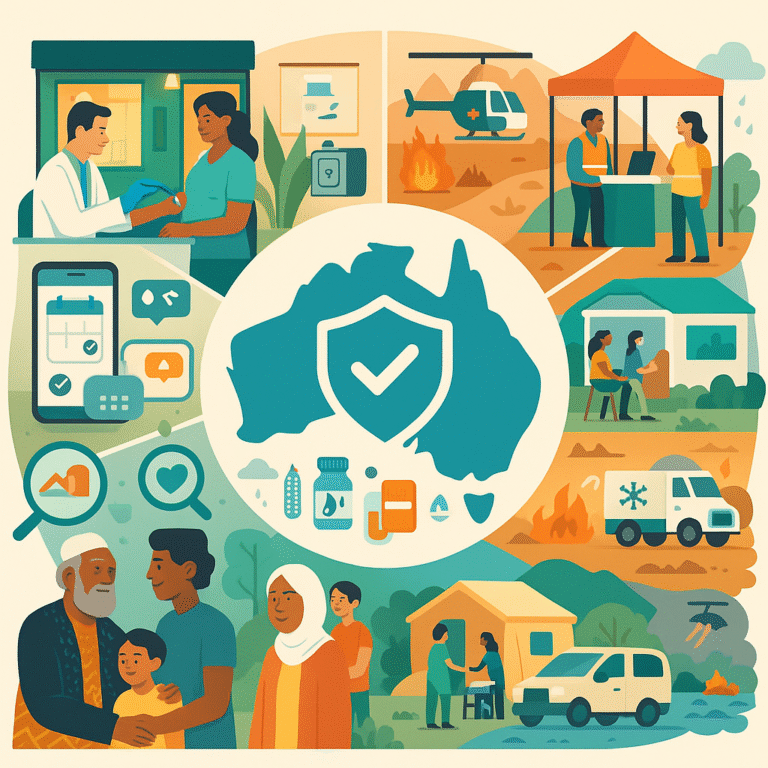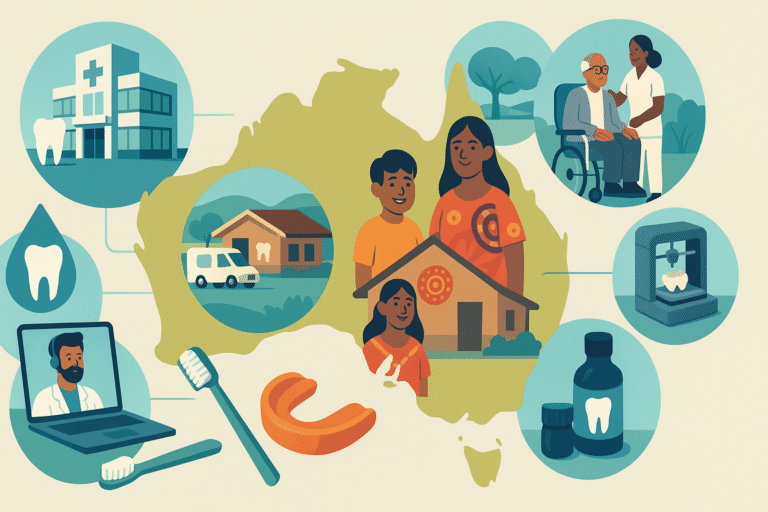Obesity in Australia is driven by a complex web of influences: an abundant supply of ultra‑processed food, aggressive marketing to children, time‑poor households, sedentary work, car‑centric streets, and unequal access to healthy options in regional and remote communities. Rates are higher among people living with disadvantage and among Aboriginal and Torres Strait Islander peoples due to historical and ongoing inequities. Because the drivers are layered, solutions must be layered too—combining policy, community design, services, and individual support.
At the policy level, Australia’s national approach increasingly emphasises systems change. Food labelling via the Health Star Rating helps shoppers compare packaged foods at a glance, while kilojoule menu labelling in several jurisdictions nudges healthier choices when eating out. Reformulation targets through government–industry partnerships encourage manufacturers to reduce salt, sugar, and saturated fat. Procurement guidelines in schools, hospitals, and public venues can remove the default presence of sugary drinks and energy‑dense snacks.
Healthy places matter. Investment in footpaths, separated bike lanes, shade, and safe crossings helps normalise movement for short trips. “20‑minute neighbourhood” planning—putting daily needs within a short walk—can shrink car dependency. Councils can pair infrastructure with programs: Heart Foundation walking groups, parkrun Australia, school‑based active travel, and workplace commuter challenges. The built environment sets the stage; social programs fill it with life.
Services provide tailored help. The Get Healthy Information and Coaching Service offers telephone‑based coaching for adults, while campaigns such as LiveLighter tackle unhealthy marketing with clear, evidence‑based messages. In primary care, GPs use structured frameworks (e.g., the 5As: Ask, Assess, Advise, Agree, Assist) and can refer patients to dietitians, exercise physiologists, and psychologists under chronic disease management plans where eligibility applies. For people with severe obesity and related conditions, multidisciplinary clinics and bariatric surgery are part of evidence‑based pathways, alongside emerging pharmacotherapies. Stigma‑free, culturally safe care—particularly through Aboriginal Community Controlled Health Organisations—is essential.
Digital tools can amplify reach: text‑message coaching, apps that integrate with wearables, telehealth consults, and smarter food‑ordering defaults (e.g., water as the default drink) all create small, repeated nudges. Schools remain pivotal through canteen standards, cooking and nutrition education, and active play embedded in the day. Early childhood services can apply movement guidelines, breast‑feeding support, and healthy food policies.
To keep efforts honest, measurement is key. Ongoing surveillance and public reporting (e.g., via health surveys) track trends in weight status, diet quality, and physical activity by postcode and population group. Evaluation should be baked into every initiative—was the program delivered as intended, who benefited, and what was the cost per healthy life year?
The most durable progress comes from aligning incentives: retailers rewarded for healthy planograms; workplaces recognised for active design; developers assessed on walkability; and health services funded for outcomes, not volume. Australia has many of the ingredients already—labelling, reformulation, urban design, primary care coaching, and strong community networks. Scaling what works, and doing it equitably, is the task ahead.







